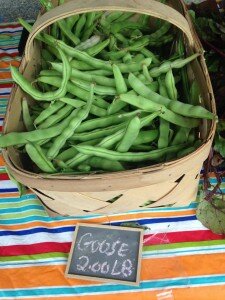

Letcher County Farmers’ Market
MACED’s third strategy brief – released today – focuses on the local foods movement in eastern Kentucky, which truly is booming. A new farmers market in the region seems to open every summer. Local butcher shops, like in Hazel Green, are increasing interest in locally-sourced meat products. Small eateries and restaurants, like in Hazard, Summit City in Whitesburg, and The Blue Raven in Pikeville – all of which source some of their food from local producers – are becoming anchors of Main Street rebirth, and leading the way for others to do the same.
It’s all no wonder, given Appalachians’ intimate history with agriculture and local food.
Eastern Kentuckians have been subsistence farmers since they first settled this region. In fact, it’s likely the only thing we as a people have done longer than mine coal. To this day, the favorite foods of many Appalachians come from family gardens – fresh, ripe tomatoes with just a touch of salt, white half runner green beans cooked with salt bacon for flavor, new potatoes with a buttery texture that can’t be imitated. They are eastern Kentucky delicacies and staple foods. And now, they could become one of our economic saviors.
Creating an infrastructure to better support local farmers and food producers is one of the most logical steps we can take toward revitalizing the region’s economy. It just makes sense to capitalize upon one of our most innate assets and find ways to create opportunities with it.
Those opportunities already exist. From MACED’s report:
[I]n 19 Appalachian counties, farms that sell directly to the consumer actually grew between 2007 and 2012. In seven counties, that number more than doubled. Direct-to-consumer sales brought in more than $5.3 million to eastern Kentucky farmers in 2012.
Area health departments, schools and non-profits are promoting the economic and health benefits of fresh fruits and vegetables grown locally. Formal farmers’ markets exist in more than half of eastern Kentucky counties, along with many formal and informal roadside stands. Farm-to-school programs are putting more local food on children’s plates. In fact, in some areas the demand for local food outstrips the supply.
Eastern Kentuckians have never really known before now that our heirloom vegetables and winter hog killings could help us grow a new economy for the future survival of not just ourselves, but our entire region. Now that we do know this, more needs to be done to ensure the local foods sector can continue to boom.